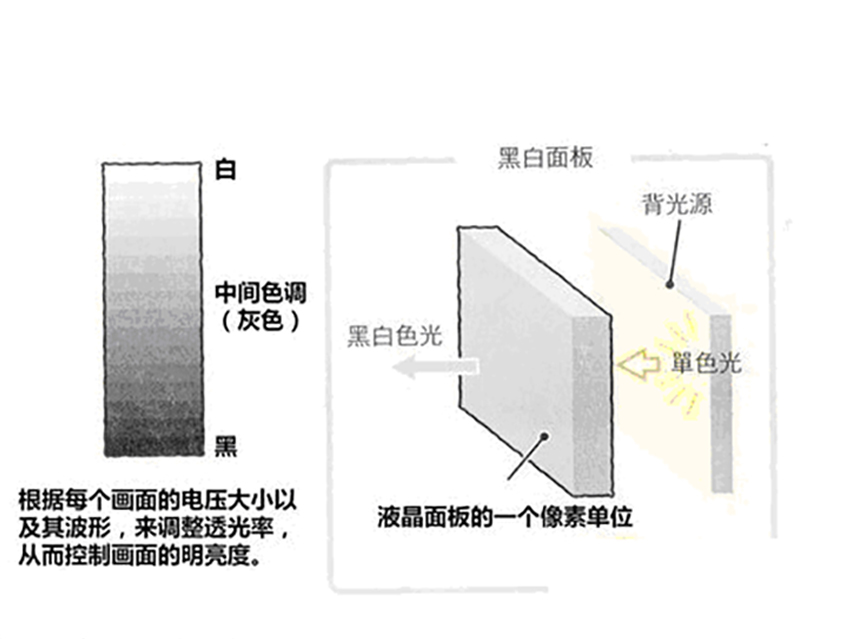THE HISTORY OF LIQUID CRYSTAL IN DETAILS
Liquid crystal is an organic substance with a certain order between solid and liquid. It has the characteristics of photoelectric dynamic scattering. It has a variety of liquid crystal phase, such as cholesteric phase, various near crystal phase, nematic equality. According to the nature of different materials, all kinds of phase liquid crystal materials are mostly developed to use in flat-panel display device. Now there are all sorts of nematic liquid crystal, polymer dispersed liquid crystal, the double(multiple) steady liquid crystal, the ferroelectric liquid crystal and anti ferroelectric liquid crystal display, etc. The most successful, the largest market share and the fastest growing is nematic liquid crystal display. Liquid crystal materials for display are composed of a variety of small molecular organic compounds whose main structural features are the bar molecular. With the rapid development of LCD, people are more and more interested in developing and researching liquid crystal materials.

1. Liquid crystal materials for TN-LCD
Many types of liquid crystal materials used for TN LCD have been developed. These liquid crystal compounds have stable structure, wide nematic temperature range and low relative viscosity. It can not only meet the high definition of hybrid liquid crystal and lower the viscosity at 20~30mPa8226∙S(20℃) and △N ≈0.15, but also the system can be guaranteed to have good low temperature performance. The △N value of biphenyl ring liquid crystal compounds is large, which is an effective component to improve liquid crystal steepness. The K33/K11 value of pyrimidine compounds is small, only about 0.60. They are often used to adjust the temperature ordinal and △N values in the liquid crystal material formulations of TN-LCD and STN-LCD. And dioxane hexyclic liquid crystal compounds are necessary to regulate the performance of "multiplex drive".
The development of TN-type liquid crystal materials originated in 1968, when dynamic scattering liquid crystal display (DSM-LCD) technology was announced in the United States. However, due to the structural instability of liquid crystal materials, their use as display materials is greatly limited. After the invention of twisted nematic liquid crystal display(TN-LCD) in 1971, TN-type liquid crystal materials with positive dielectric anisotropy were developed quickly. Particularly in 1974, the relatively stable biphenylene liquid crystal materials were synthesized by G.W.Gray, etc., which met the performance requirements of electronic watches, calculators, instrument displays and other LCD components, thus truly forming the era of TN-LCD industry.
2. Liquid crystal materials for STN-LCD
Since the invention of the super twisted nematic phase liquid crystal displays(the STN LCD) in 1984, because of its display capacity expansion, electro-optic characteristic curve steepening, contrast enhancement, required the better nematic phase liquid crystal electro-optic materials, by the end of the 80s formed the STN LCD industry, its products are mainly used in BP machine, mobile phones and laptop computers, portable computer terminal.
The main liquid crystal compounds used in STN-LCD are diphenylacetylene, ethyl bridging and chain enyl liquid crystal compounds. Diphenylacetylene compounds: the response speed of STN-LCD is increased from 300ms to 120~130ms, which greatly improves the performance of STN-LCD, and thus it is widely used in STN-LCD nowadays. About 70% of liquid crystal materials used in STN-LCD currently contain diphenylacetylene compounds. Ethyl bridged liquid crystals: compared with other liquid crystals, the viscosity and △N value of these liquid crystals are lower. The phase transition temperature range and melting point of the corresponding compounds are relatively low, which are important components to regulate the cryogenic properties of TN and STN mixed liquid crystal materials. Alkenyl liquid crystals: since STN-LCD requires a steep threshold, the purpose can only be achieved by increasing the elastic constant ratio of liquid crystals K33/K11. Alkenyl - based liquid crystal compounds with abnormally large elastic constant ratio K33/K11 have been used in STN-LCD and satisfactory results have been obtained.
Mixed crystal materials used for STN-LCD generally have the following properties: low viscosity, big K33 / K11 value, adjustable △N and Vth (threshold voltage), the bright spot is 30℃ above the upper limit of working temperature. The modulation of mixed crystal materials usually adopts the "four bottle system". This modulation method can independently change the threshold voltage and birefringence without significantly changing the other properties of the liquid crystal.
In recent years, STN displays have made significant improvements in contrast ration, viewing angle and response time. Due to the impact of TFT-LCD, STN-LCD gradually lost market in areas such as notebook computers and LCD TVS. Due to the cost factor, TFT-LCD will not be able to completely replace STN-LCD's original application in areas such as mobile communications and game consoles.
3. Compared with TN-LCD and STN-LCD materials, TFT-LCD has higher and stricter requirements on material performance. The hybrid liquid crystal is required to have good optical, thermal and chemical stability, high charge retention and high resistivity. Mixed liquid crystals are also required to have low viscosity, high stability, appropriate optical anisotropy and threshold voltage.